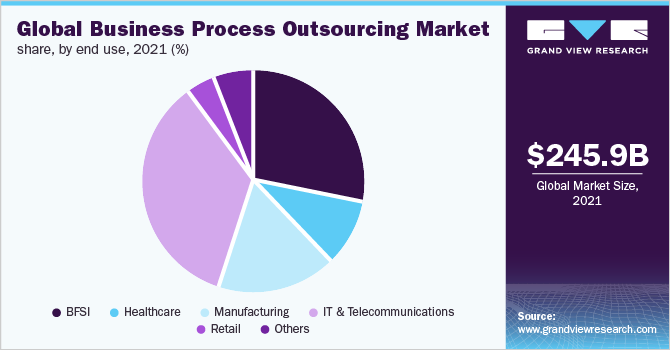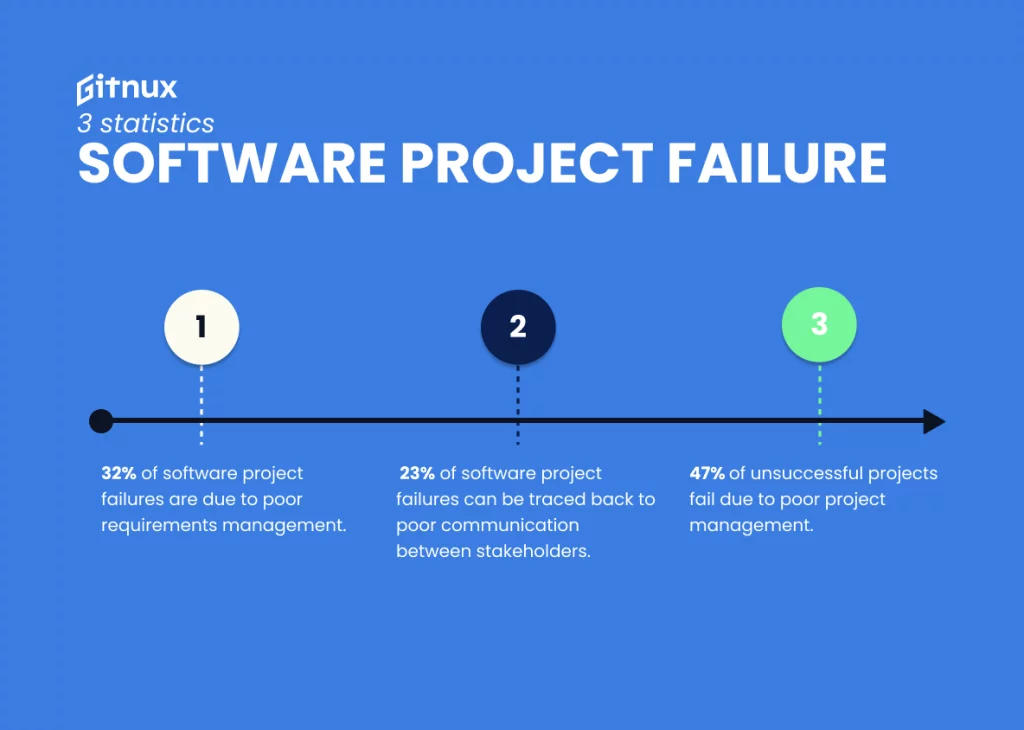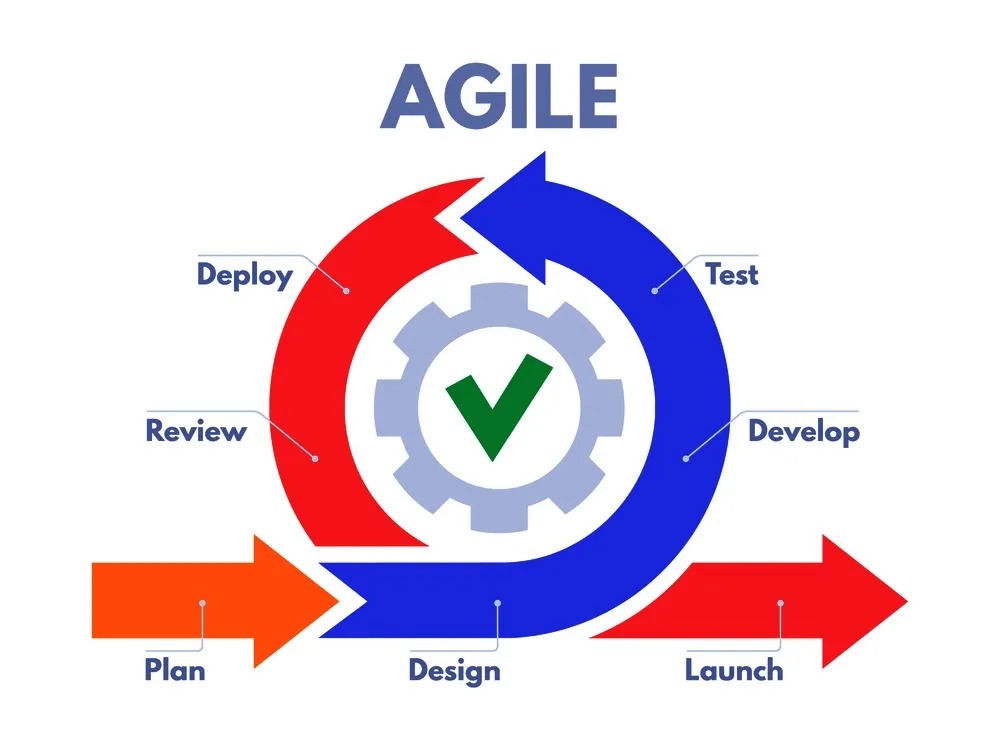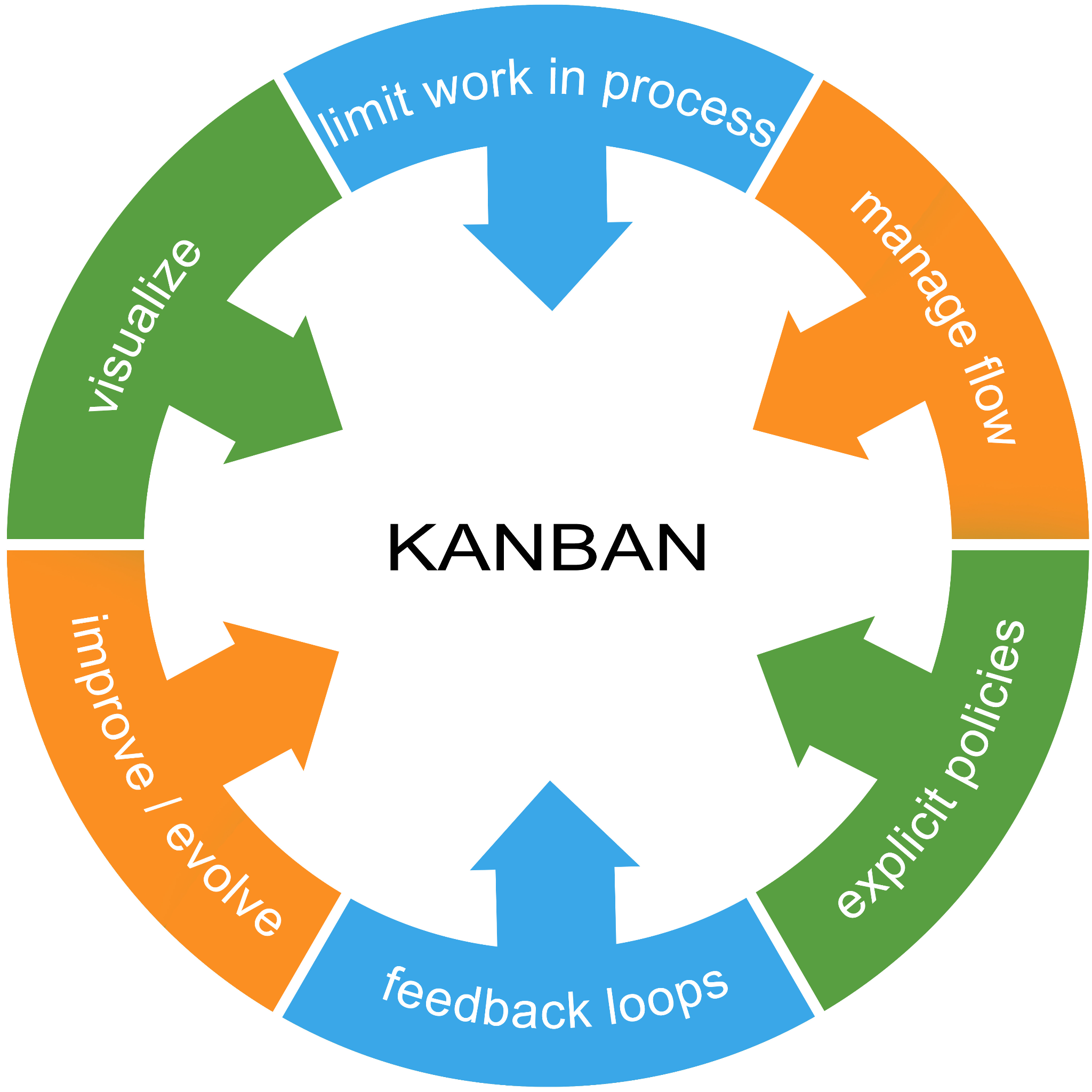Software Development Outsourcing: How to Navigate It Effectively to Boost Success

Once labeled as the bad boy of business, outsourcing — particularly software development — has emerged as a game-changer for brands and organizations seeking to innovate, streamline operations, and stay ahead of the competition.
Take a look at the following data:

Source: Grand View Research
In fact, many of today’s biggest tech brands, including Facebook, Google, Apple, and Microsoft leverage outsourcing. It is therefore unsurprising that tech startups are following suit.
A study found that 83% of small businesses planned to either maintain or increase their spending on outsourced business services in 2023 — a clear indication that many are convinced that the practice offers rewarding results.
However, navigating the outsourcing landscape effectively requires a deep understanding of the process and careful consideration of various factors. And this blog can help you do just that.
Whether you’re a startup, a growing enterprise, or an established organization, this blog will equip you with the knowledge and strategies you need to harness the benefits of outsourcing while overcoming its common challenges.
Read on to discover what software development outsourcing truly entails, explore its potential advantages, and gain valuable insights into how you can navigate this dynamic landscape with confidence.
What is software development outsourcing?
Software development outsourcing is the practice of delegating software development tasks and projects to external third-party companies or individuals specializing in the field. It involves hiring external resources to handle various stages of the software development lifecycle, including design, coding, testing, and maintenance.
The two sides of the outsourcing coin
At its core, outsourcing involves delegating certain tasks or projects to external parties. However, not all outsourcing is created equal. And neither do outsourcing providers (more on this below).
One common approach to software development outsourcing is offshore outsourcing, wherein companies choose to delegate their projects to countries with lower labor costs. This strategy often appears attractive mainly due to the potential for cost savings.
Over the past years, however, a significant transformation has occurred in the outsourcing landscape.
The conventional outsourcing model has evolved to emphasize collaboration, transparency, and shared responsibilities. Many businesses have come to realize that the key to a successful software development project lies in finding a partner who collaborates with them, sharing the vision and mission.
Let’s delve into the reasons why.
Why More Global Companies Outsource Software Development Services
Many global companies outsource software development to take advantage of the numerous strategic advantages it offers. These include:
1. Cost savings
Yes. Cost reduction remains among the primary benefits of outsourcing, but not necessarily because it allows one to leverage low labor costs.
When outsourcing software development, companies often benefit from leveraging offshore economics, significantly reducing long-term and recurring costs often associated with internal talent sourcing and recruitment.
Outsourcing also grants companies instant access to the providers’ established processes and resources. Why is this important? Time is of the essence in today’s technology-driven world. Developing and maintaining specialized software tools and technologies in-house can be a cumbersome, time-consuming process. And in business, time equates to money.
2. Increased efficiency
Software outsourcing not only saves you time and money but ensures that your software solutions are top-notch, setting your business on a path to success in the rapidly evolving tech landscape.
When you outsource to a reputable provider, you’re not merely hiring individuals — you’re enlisting seasoned experts well-versed in the latest industry trends, technologies, and best practices. These competencies allow for the seamless execution of your projects.
Outsourcing teams often bring pre-built frameworks and proven methodologies that eliminate trial-and-error phases. This is especially beneficial when dealing with complex technologies such as advanced custom AI agent development services, which require domain-specific expertise and precise implementation.
By tapping into external specialists, your business can access innovation faster than building capabilities from scratch. It also enables internal teams to focus on core objectives while offloading technical complexities to professionals.
There’s no need for your internal team to reinvent the wheel or navigate through the learning curve for every project. With outsourcing, you’re essentially plugging into a system that’s designed for efficiency, where every task is optimized for speed and effectiveness.
As a result, your projects progress more swiftly, you meet deadlines with ease, and your company gains a reputation for being agile and responsive.
3. Scalability
Picture a scenario where your company, driven by internal limitations, can only take on projects within a constrained bandwidth. This inflexibility could spell missed opportunities and a slower response to market shifts.
That’s where outsourcing step in as a game-changer. Outsourcing providers with versatile skill sets and scalable resources, such as Appetiser, offer a valuable key to unlocking business agility. They are well-equipped to seamlessly handle projects of varying complexities, from small-scale tasks to large, intricate endeavors.
When a new opportunity arises, you can swiftly engage your outsourcing partner to take on the extra workload without the overhead of hiring and training new staff. Conversely, during quieter periods, you can scale down, avoiding unnecessary costs. This flexible approach empowers you to align your business with market dynamics, ensuring that you’re always ready to seize the moment.
4. Focus on core competencies
One of the most compelling aspects of outsourcing software development is the freedom it grants your internal teams to concentrate on their core competencies.
Consider, for a moment, the alternative scenario: an internal team that’s stretched thin, juggling software development alongside their primary responsibilities. In such a situation, not only is the team’s productivity compromised, but their ability to innovate and excel in their core areas of expertise is hampered. The result? A potential loss of competitiveness and a slower trajectory of growth for your business.
Outsourcing changes this dynamic dramatically. By entrusting software development to external experts, your internal teams are freed from the resource-intensive and time-consuming tasks of software development, leaving them to do what they do best. Whether it’s marketing, product development, customer service, or any other core function, your team can now devote their full attention to these critical aspects, driving business growth and innovation.
5. Access to a global talent pool
Another compelling advantage of outsourcing software development is the unprecedented access it provides to a global pool of talented developers.
These developers aren’t just any run-of-the-mill workforce but experts who have their fingers on the pulse of the technology industry, staying up-to-date with the latest trends and best practices.
Take, Appetiser, for example. We pride ourselves on hiring the top 1% of developers from various parts of the world, many of whom have backgrounds in tech giants like Google and Samsung.
This means you don’t have to compromise on the caliber of your projects — you can handpick the best of the best in the industry, effectively bringing Silicon Valley talent to your projects, without breaking the bank.
5 Best Practices for Effective Software Development Outsourcing
Indeed, software development outsourcing has evolved beyond cost-cutting to become a strategic alliance. However, one fact remains unchanged: finding the right collaborative partner is crucial.
The following tried-and-true best practices can’t be overlooked if you want your outsourced software development project to thrive:
1. Conduct thorough research about a potential software development outsourcing partner
Much of the success or failure of a software development project relies on the capabilities of your chosen outsourcing company. To significantly reduce the risks associated with outsourcing and increase the chances of successful collaboration, it is imperative to invest time and effort into evaluating potential software developers.
Among the crucial factors to examine are the outsourcing companies’ reputation and track record.
Look for certifications, awards, specialized skills, and experience in the specific programming languages, frameworks, or tools required for your project. Their proficiency in these areas will directly impact the quality and efficiency of the software solutions they deliver.
For example, the international client ratings platform Clutch has often ranked Appetiser as Australia’s top developer. Aside from that, Design Rush has ranked us #4 on the list of the world’s top app design agencies. If you want to discover how our apps and app designs have helped clients earn or raise funding, book a free consultation with us.
Researching the outsourcing provider’s past projects and client feedback and references is another crucial step. Through these, you can gain insights into their ability to deliver high-quality software solutions and meet project deadlines.
Additionally, perform due diligence on their internal corporate culture and talent sourcing and development process. What are the potential outsourcing partner’s team size and qualifications? What are their project management approach and communication practices? How do they collaborate with internal and external stakeholders?
Understanding the outsourcing partner’s corporate culture helps assess whether their values and principles align with your own organization’s culture. It ensures compatibility in terms of ethics, social responsibility, and overall business approach. This alignment fosters a stronger partnership based on shared values and mutual understanding.
2. Define clear objectives, project requirements, and scope
Research found that 47% of software projects fail due to poor project management, while 32% are due to poor requirements management.

Source: Gitnux
As such, another crucial step for successful software development outsourcing is to define project requirements and scope clearly.
To thoroughly understand the desired outcome, functionality, features, and technical specifications of the software project, our project managers suggest discussing all crucial factors of your software development project, including:
● Project goals
● Target audience
● User experience expectations
● Any other specific industry or compliance requirements
Now here’s the deal.
Software development projects are inherently complex, involving multiple stakeholders, diverse requirements, and intricate technical details. This nature can make it difficult to outline all aspects of the project upfront, leading to uncertainties and potential misunderstandings.
In our experience, your needs and requirements in your software projects will often evolve as you gain more insights about the process, your app idea starts to take shape, or as market conditions change.
This is why at Appetiser, we advocate for visual scoping via design. Let me briefly explain how it works.
First, we help you identify your minimum viable product (MVP) or the version of your software that has the just most important features. We take into consideration your goals and objectives, target audience, UX expectations, and other desired outcomes.
Once your MVP has been established, we use sketches and wireframes to visually map out your software’s various components, features, and interactions. This process enables iterative feedback and collaboration, helping align everyone’s expectations before the actual coding phase begins.
I encourage you to check out our article on our app development process for more in-depth insights.
3. Establish effective communication channels
To promote successful outcomes, it is important to set expectations on how you can track the progress of your project.
Discuss your preferred communication frequency, modes of communication, and response times with your software development company. Clear and transparent communication ensures that both parties are aligned on project milestones, deliverables, and timelines.
It also allows you to identify potential challenges or changes in scope early on. This transparency helps build trust and confidence in the outsourcing team.
Now in case you’re wondering how we promote collaboration among our internal and external stakeholders, the answer is we ensure that it is ingrained into our development methods. I’ll delve into this on the next item, but first, let me just share one of the many examples of brands that benefitted from collaborating with our team, Canvas Living.

Canvas Living challenged us to build their residents app within a strict deadline, aligning with the grand opening of a new multi-million dollar development complex.
We maintained open channels with the Canvas Living team, continuously identifying the most valuable features that would provide optimal value to the users and ensure a high return on investment for the business.
Remarkably, we completed the app well ahead of the grand opening, allowing it to hit the market in just 4.5 months. This achievement not only met the deadline but also saved our client valuable time and money.
Do you want the same results for your software project? Hit us up and let’s chat!
4. Embrace Agile methodologies
Rather than following a linear path from start to finish, software development involves a cycle of iterative steps of continuous improvement, refinement, and adaptation throughout the development lifecycle.
In this environment, you would want to have enough wiggle room to pivot quickly as needed without draining your resources. Consider adopting agile development methodologies for improved project management and flexibility.

Source: Foghorn Consulting
Agile methodologies promote iterative development, frequent feedback loops, and adaptability to changing requirements, ensuring better collaboration, scalability, and faster delivery.
At Appetiser, we follow an agile framework called Kanban Development.

Source: Agile-ity Inc.
This framework emphasizes frequent communication, collaboration, and feedback loops within the development team and with stakeholders. It allows for continuous improvement, adaptation, and timely delivery of working software.
Here’s how we do it:
- Once you’ve approved the final design of your app, we will create a roadmap that documents your software’s MVP features and the estimated timeline for each.
- Each month, we will focus on tackling as much backlog as possible. This involves coding and conducting quality assurance for each feature based on the priorities we’ve established.
- We will send you a weekly report that outlines our progress in real time. This allows you or your users to start utilizing and testing your software, gaining valuable feedback.
- If, based on user feedback or any other reason, you find the need to scale, you have the flexibility to adjust your team size and budget every month. We do not lock you in.
By following this approach, we assure you of close collaboration, continuous progress, and the ability to adapt to evolving requirements throughout the development process. More importantly, this process keeps you in control of the project and your budget.
5. Ensure intellectual property protection
Your software or application represents a significant investment of your time, resources, and creativity. The importance of IP protection in software development therefore cannot be overstated.
Protecting your IP safeguards your competitive advantage, prevents unauthorized use or replication of your ideas, and preserves your ability to monetize your software.
Among the first things that you should straighten out with a potential partner is who will own the software or application.
Establish the ownership rights of the intellectual property developed during the outsourcing engagement. Specify in the contractual agreement that all IP belongs to you or your organization. This is something that we both advise and assure our partners at Appetiser.
As the owner and financier of the project, you retain full rights to the software and own all of the intellectual property associated with the design and development. The intellectual property will remain yours, providing you the freedom to utilize it in any future projects as you deem appropriate — whether you continue a long-term partnership with us or not.
Now, here are more tips to ensure your outsourcing provider can effectively protect your intellectual assets, consider the following measures:
- Review clients’ testimonials and look for evidence of the provider’s commitment to intellectual property protection and their experience working with sensitive information.
- Inquire about the outsourcing company’s security protocols, infrastructure, and data protection measures.
- Implement Non-Disclosure Agreements (NDAs) that clearly define the confidential information being shared and prohibit its disclosure to third parties. Ensure that all members of your development team, from software engineers to quality assurance specialists, are aware of it.
By implementing these measures, you can help ensure that the software outsourcing provider has the necessary safeguards and practices to protect your intellectual assets.
What Happens When You Outsource Software Development to the Wrong People?
1. Misaligned goals and objectives
One of the most significant pitfalls when outsourcing software development to the wrong people is a misalignment of goals and objectives. If your chosen partner doesn’t fully understand your company’s vision, mission, and the specific goals you aim to achieve with your software project, it can lead to a project that strays off course. This misalignment can result in wasted time and resources, as well as frustration on both sides.
2. Communication challenges
Effective communication is the linchpin of any successful project, and it’s even more critical in the context of outsourcing. When you work with an outsourcing partner who doesn’t communicate effectively, misunderstandings and confusion can arise. Language barriers, differing time zones, and cultural differences may exacerbate these challenges. These communication roadblocks can lead to project delays, misinterpretations of requirements, and a lack of transparency, all of which can hinder progress.
3. Quality and consistency concerns
Outsourcing to the wrong people can result in variations in the quality and consistency of the work. If your outsourcing partner doesn’t adhere to your standards and doesn’t have the necessary skills and experience, the software deliverables may fall short of your expectations. This can lead to user dissatisfaction, potential rework, and, in extreme cases, project failure. In the worst scenarios, a subpar software product could damage your company’s reputation and erode customer trust.
4. Hidden costs
Some providers may not be transparent about the true costs of outsourcing. Hidden expenses related to contract negotiations, ongoing monitoring, and potential rework or modifications can pile up, straining your budget and potentially leading to project overruns.
Find a software development outsourcing partner who works WITH YOU and not for you
The message is clear: finding an outsourcing partner who genuinely collaborates with you and shares your goals and vision is the key to unlocking the full potential of your projects.
When you have a partner who not only understands your objectives but actively participates in problem-solving, adapts to changes, and prioritizes open and effective communication, the chances of success increase dramatically.
Ready to turn your software idea into a reality? Our global experts are ready to become an extension of your team.
Contact Appetiser today!

Jane Eslabra has 14+ years of experience producing content across traditional and digital platforms. She channels her strong passion for fostering tech startup growth through knowledge sharing.


